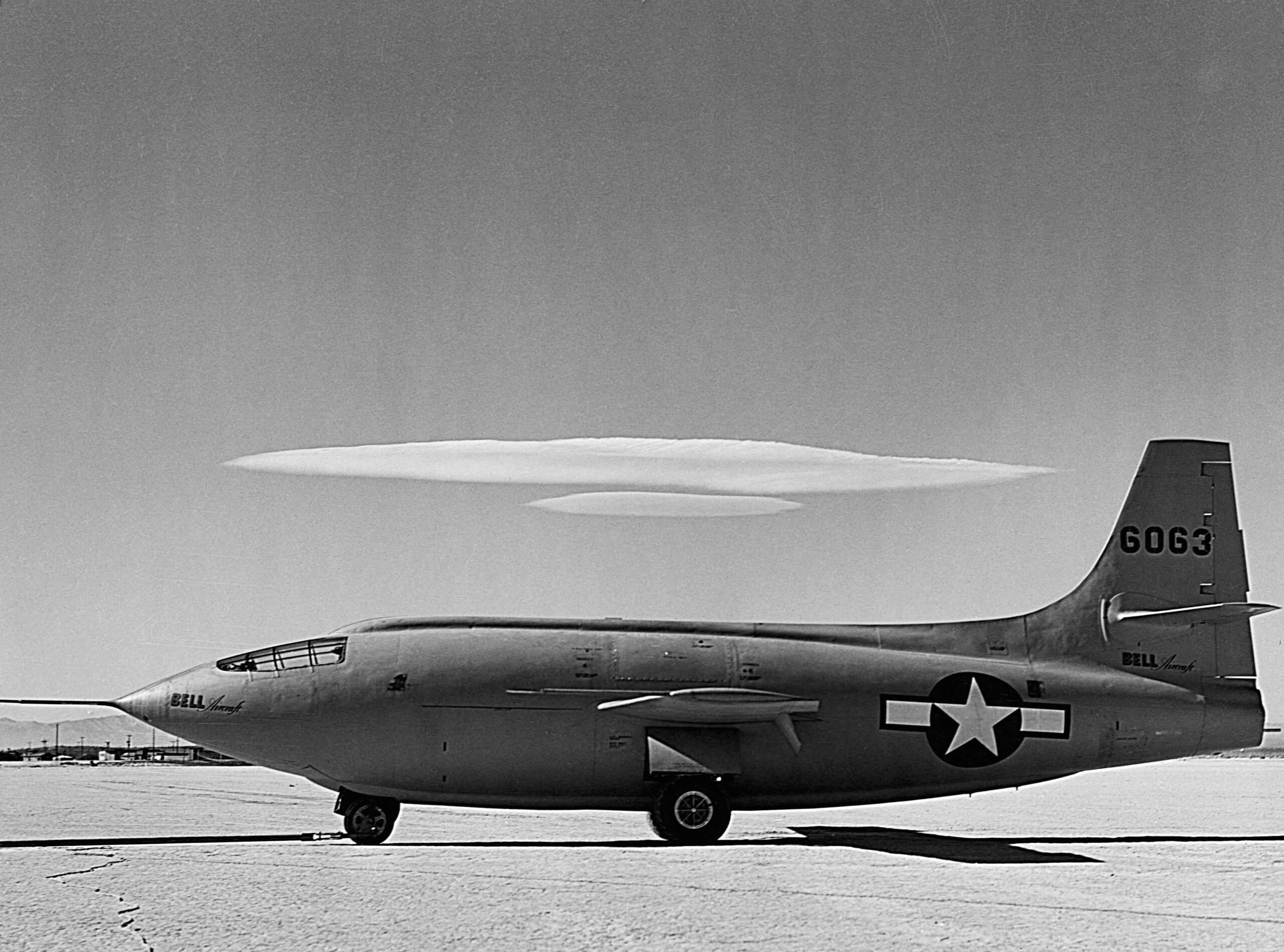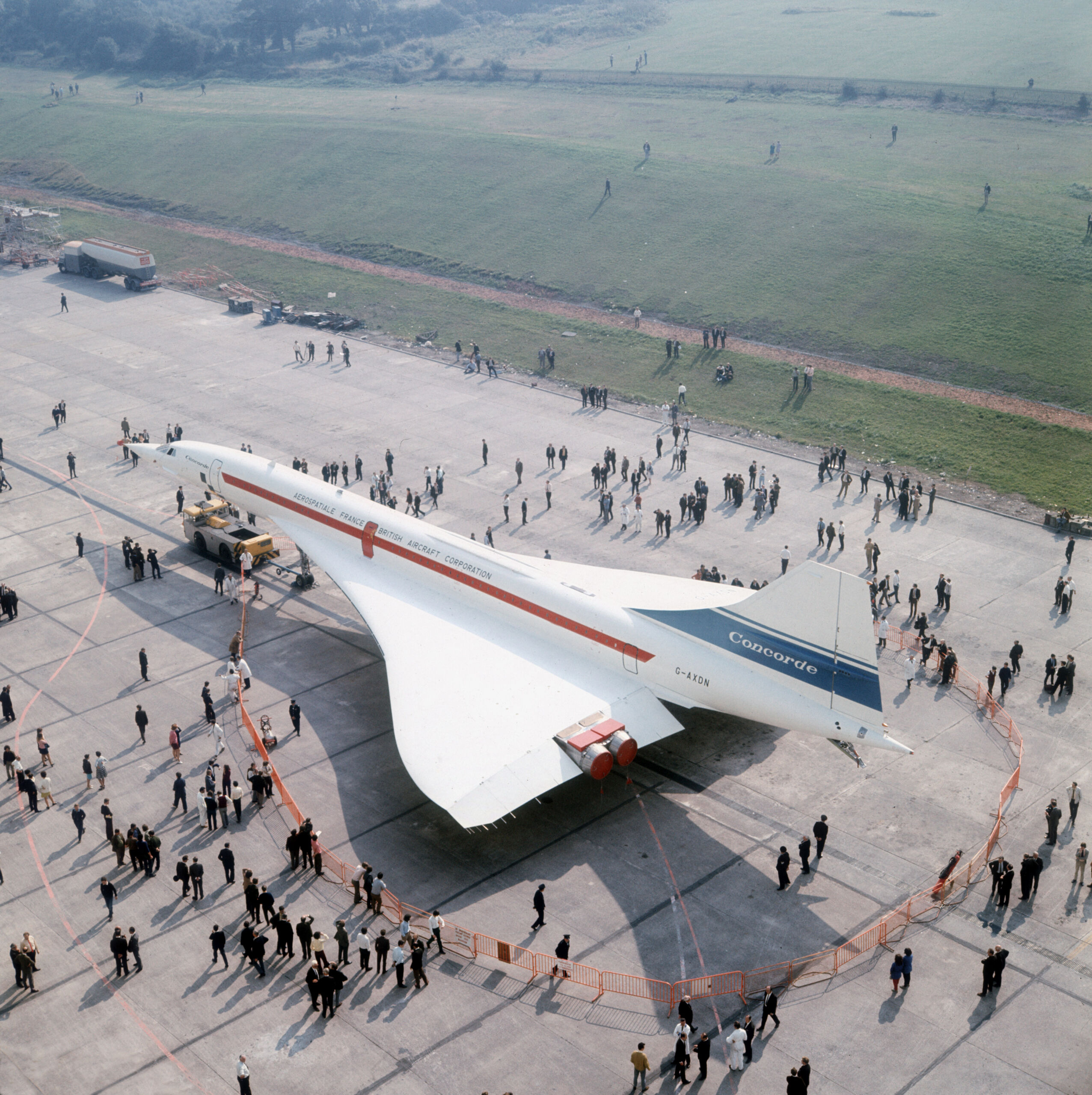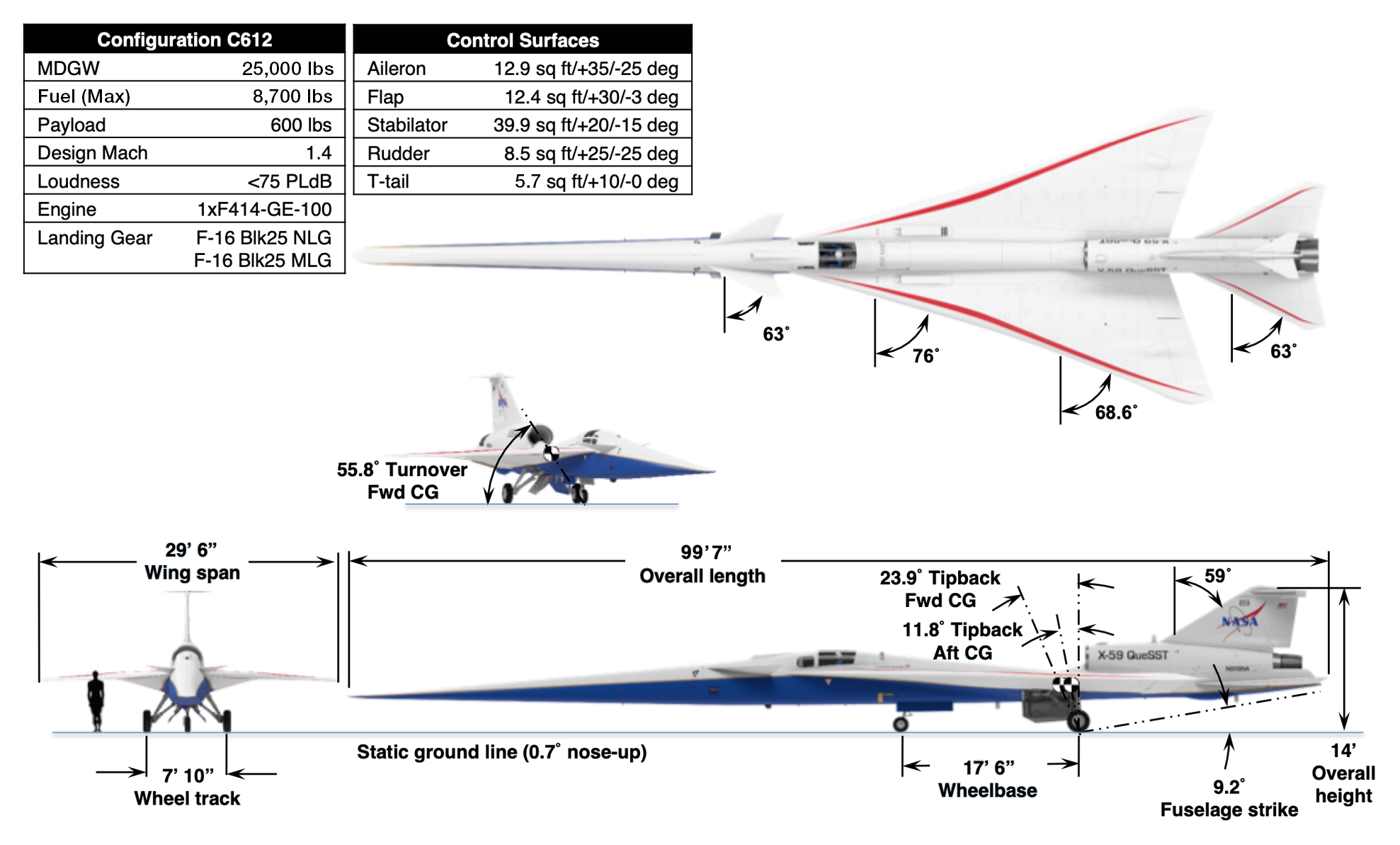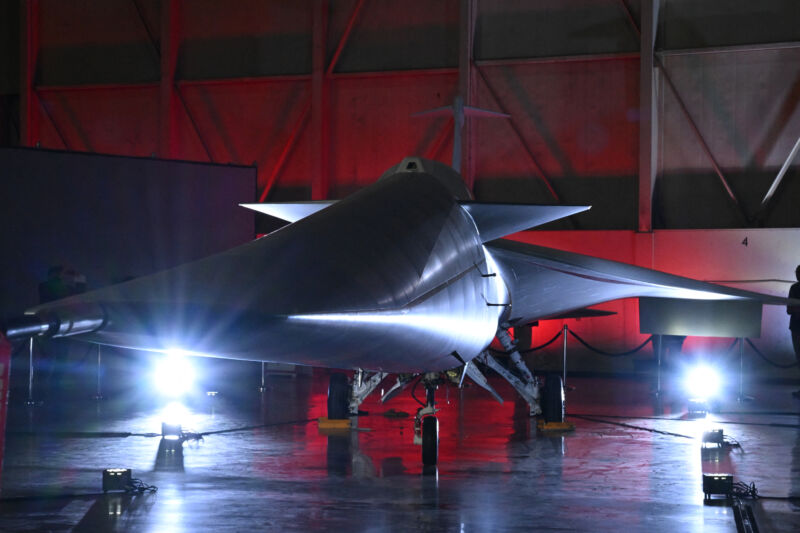Supersonic flight without loud booms? NASA is working on that.
When Chuck Yeager reached Mach 1 on October 14, 1947, the entire frame of his Bell X-1 aircraft suddenly started to shake, and the controls went. A crew observing the flight in a van on the ground reported hearing something like a distant, rolling thunder. They were probably the first people on Earth to hear a boom made by a supersonic aircraft.
The boom felt like an innocent curiosity at first but soon turned into a nightmare. In no time, supersonic jets—F-100 Super Sabers, F-101 Voodoos, and B-58 Hustlers—came to Air Force bases across the US, and with them came the booms. Proper, panes-flying-off-the windows supersonic booms. People filed over 40,000 complaints about nuisance and property damage caused by booming jets, which eventually ended up with the Federal Aviation Administration imposing a Mach 1 speed limit for flights over land in 1973.
Now, NASA wants this ban to go. It has started the Quesst mission to go fast over American cities once more. But this time, it wants to do it quietly.
Breaking the sound barrier
The reason Yeager’s X-1 was so difficult to control at Mach 1 was not an actual “sound barrier” the plane broke. The “barrier” aspect is purely metaphorical. While Yeager’s plane experienced turbulence and shaking, it was due to rising drag and aircraft design.
At subsonic speeds, the airflow around the wings, tail, and fuselage is smooth. But at supersonic speeds, the air going over irregular shapes— the nose, canopy, and wings—accelerates to above the speed of sound. Then, where the curvature of the wing or canopy becomes less pronounced, it starts to build up pressure and decelerate back below Mach 1, a phenomenon known as “adverse pressure.” This creates shockwaves, and those are what cause supersonic booms and change the way wings, flaps, and other control surfaces behave in an airplane. The X-1 started acting so wild at Mach 1 because its aerodynamics weren’t designed for supersonic flight.
Lockheed, Bell, McDonell Douglas, and other companies that built early supersonic planes solved the control issues quickly, which made accelerating to Mach speeds pretty uneventful for the pilot. But that left two decades of booming.

A Bell Aircraft Corporation X-1 supersonic test plane, circa 1950. An X-1 was the first plane to
break the sound barrier in Chuck Yeager’s flight on October 14, 1947.
Museum of Flight/CORBIS/Corbis via Getty Images
How loud is the boom?
A supersonic jet boom sounds like a thunder strike hitting nearby—a product of the shockwaves generated mainly by the nose and tail of the aircraft. The boom usually falls between 100 and 110 on a perceived level decibel scale (PLdB), which is used to quantify how people experience sound. A car door slam 100 feet away is 60 PLdB; distant thunder, like the one the ground crew heard during Yeager’s first supersonic flight, is around 70 PLdB. A supersonic boom is on par with a nearby thunder strike, which falls at around 105–110 PLdB.
It’s really freaking loud. And you can easily make it even louder.
This 110 PLdB is estimated for an airplane in a steady, level flight at high altitude. These conditions create what’s known as a “carpet boom” that tracks the aircraft on the ground for the entire time it flies supersonic.
Transitions from subsonic to supersonic speeds and vice versa result in so-called “focus booms,” which can be up to three to four times louder than a carpet boom. This likely gave rise to the popular misconception that the boom is heard only when a plane breaks the sound barrier.
Focus booms are also caused by maneuvers like pitch and dive, where an aircraft gains altitude, levels, and flies back down; turns made with aggressive banking angles work as well. Unlike carpet booms, the booms made by transitions and maneuvers are singular events. The military even tested whether those amplified booms could be projected at chosen spots on the ground to weaponize them. As it turned out, you could do targeted booms, but they proved more scary than lethal.
But despite all the problems with booming, the allure of superior speed was irresistible. Supersonic airplanes could cut the time of transatlantic flights by half. So back in the mid-1950s, when the FAA’s Mach 1 speed limit was still many years away, British and French engineers got to the drawing board and conceived one of the most breathtaking airliners to ever pierce the sky: Concorde.
Roar of the Concordes
The first studies conceptualizing Concorde started in 1954. In 1962, France and Britain signed a treaty that created a joint development project to build it—the scale of the effort was so gargantuan that neither country could pull it off on its own. Arguably, building a supersonic airliner in the 1960s and early 1970s was more of a moonshot than an actual Apollo Moon landing.
The plane was built by Sud Aviation and British Aircraft Company, which many corporate mergers later became parts of Airbus and BAE Systems, respectively. The constructors didn’t want it to go only slightly supersonic like the Yeager’s X-1 did. They wanted to go over Mach 2, which was (and remains) crazy fast and made building the plane even harder.
At Mach 2.2, air friction heated up Concorde’s fuselage to 121° Celsius, which made it expand over 12 inches. To keep the passengers and crew from boiling inside, the craft’s air conditioning system used its jet fuel as a heat sink. To accelerate to and maintain Mach 2.2, Concorde used four bespoke Rolls-Royce/Snecma Olympus 593 engines, each generating over 160 kN of thrust.

The second Anglo-French supersonic airliner, Concorde 002, at the British Aircraft
Corporation's airfield at Filton, Bristol, where it was constructed. 002 is identical to
Concorde 001, which was assembled in France.
Victor Drees/Daily Express/Hulton Archive/Getty Images
The engine’s compressor blades and drums were made of titanium to withstand the high temperatures of air coming through the inlets. The signature delta wings needed a super aggressive angle to generate lift at low speeds, which forced the engineers to fit Concorde with its signature nose, which was lowered during takeoff and landing so the crew could see the runway. It was probably the quirkiest airplane ever made.
And then there was the noise. Concorde’s supersonic boom felt like a thunder strike, even when it was flying at its usual cruise altitude of 60,000 feet. You can actually hear how it sounded—within the limitations of over 20-year-old handheld cam, of course. Just get good headphones and crank up the volume (at your own risk).
The landing and takeoff noise was just as bad. Concordes approaching New York’s JFK Airport flew over Queens. People who lived there back then remember shaking furniture followed by “the most deafening roar you’ve ever heard.”
Quieting the boom
Research on supersonic booms started a couple of years after Yeager’s first supersonic flight. Back then, the Air Force wanted to learn if the booms could cause damage on the ground or trouble to nearby airplanes flying in formation. “They started looking into these problems in the 1950s, and NACA, the predecessor of NASA, was there too, right from the beginning,” said Peter Cohen, NASA’s Quesst mission integration manager. The booms were measured with arrays of microphones on the ground, on balloons, towers, and other aircraft following the booming plane at various distances.
“Lots of research, lots of measurements taken,” said Cohen.
The 1960s saw the first designs aimed at reducing the boom tested in wind tunnels. “These were small aircraft models, between an inch and three inches long, used to test shockwave pressures around them to see how changing the design affects boom acoustic signature,” Cohen explained.
The first mathematical concepts describing how low-boom aircraft should be designed were developed in the 1970s; the 1980s brought computers that could run those models in a timely manner. “We also got first programs to simulate fluid dynamics. So we started to identify designs that would not only reduce sonic boom noise but were also practical and looked like real airplanes,” said Cohen. (One of the first of those designs was intended to be a next-gen Concorde.)
The main focus of the High Speed Research (HSR) program was a 300-passenger airliner called High Speed Civil Transport, co-developed with and largely funded by Boeing. The program produced some ideas on how to design engine nozzles to reduce takeoff and landing noise, but Boeing considered boom-mitigation technologies unfeasible at that time. That meant the HSCT airliner would be limited to subsonic speeds over land, just like the Concorde it was supposed to compete with. This ultimately led to Boeing withdrawing its interest and money. The HSR program was canceled in 1999.
“But then DARPA said, ‘What if we could build a small airplane instead, make it quiet, and see where that would get us?’” Cohen said. This led to a new program called Shaped Sonic Boom Demonstration, which used a modified F-5E fighter jet to see if quieting the boom was possible in the real world.
Test flights done in 2003 proved it was.
“It verified the theory. The measurements done on the ground matched the design predictions,” Cohen said. So in the late-2000s, NASA contracted Boeing and Lockheed to develop concept designs for low-boom supersonic airliners, and both concepts seemed viable on paper. “And since we wanted to test those design approaches in a real atmosphere, we started thinking about building a new X-plane,” said Cohen. This plane became known as the X-59, and NASA chose Lockheed to build it.
Low boom design
When earlier designs flew faster than sound, individual shockwaves coming from different features like the nose, canopy, and wings merged into one powerful shockwave as they traveled to the ground. “We designed the X-59 so that those individual shockwaves don’t merge, which makes the boom quieter,” said Mike Buonanno, the X-59 air vehicle lead at Lockheed.
But making the X-59 sonic boom quieter was just one of the two main goals. The other was tuning the boom characteristics of the relatively small jet to resemble those of a full-sized airliner. “The X-59 has roughly 25 thousand pounds takeoff weight, but it makes a sonic boom that sounds similar enough to a much larger airplane,” Buonanno added.

The X-59's stats.
“When you compare the X-59 to conventional supersonic aircraft, it looks very clean. “One of the ways to prevent all those small shocks that merge later is to eliminate them,” said Dave Richardson, a director at Lockheed’s X-59 Program Management.
Like an electric car, the X-59 has a mostly flat underbody. The engine inlet, usually fitted at the bottom of the plane, is installed at the top, just ahead of the tail. Bumps that accommodate control effectors for flaps and so on are on the top of the wings, not the bottom. The engine nozzle has a bathtub-like cover underneath it, again to maintain this featureless underside.
“This way the vast majority of shocks generated by the X-59 are directed upward, and very few go to the ground,” Richardson explained. But perhaps the most unusual victim of eliminating shock-generating features was the canopy. The X-59 has no front-facing windows.
From the pilot’s point of view, forward visibility is provided by a screen fitted where a front window should be, displaying a feed from a front-facing camera. The only real windows are to the sides to give some peripheral vision. “This kind of system has been studied earlier—for example, in the HSR program. Back then, pilots got motion sickness because the displayed image did not match the real world exactly. But the system in the X-59 gives you better visual quality than your eyes,” said Cohen.
According to Cohen, who is also a pilot, the X-59 is a good flying airplane. “We have a simulator, and I have flown it myself. It’s a research airplane, so it does not have some of the pilot-friendly features a production machine would have. It doesn’t loop and roll like a fighter jet, but it is very stable, very controllable,” Cohen said. And it is quiet—the sonic boom it will make should be around 75 PLdB, roughly like a car door slam from 20 feet away.
The push for change
The X-59 is being built to do a series of supersonic test flights over American cities to boom people living there. Then NASA will gather feedback from those on the ground and compile it into a data pack for the aviation authorities, the FAA and the International Civil Aviation Administration. Should things work as expected, that data will be part of a push to lift the ban on supersonic flight over land and replace it with an acceptable noise standard.
“We have labs and rooms with speaker systems that can simulate quiet supersonic booms. But we want to see how people react to them in their communities,” said Cohen. To make the data more variable, the X-59 will generate booms with different intensities.
“We have a requirement for the X-59 to be able to use maneuvering to both make the boom quieter or louder,” said Buonanno. For example, when a supersonic airplane turns, the boom is slightly louder on the inside of the turn and quieter on the outside. There are other maneuvering tricks, too. “By diving a plane very steeply and going briefly supersonic, you can vary the sonic boom sound level by varying the distance between the plane and the listeners on the ground,” said Cohen.
NASA has also figured that this diving maneuver could be used to demonstrate how the X-59’s quiet boom would sound by using a computer model of the X-59. So they brought the members of the ICAO’s Committee on Aviation Environmental Protection (CAEP) out to the Mojave Desert and hit them with an equivalent boom. “I have to tell you, we had a lot of skeptics before we did that,” Cohen said.
According to Cohen, the demonstration went well and managed to convince some skeptical CAEP members. “People do not understand that you can quiet the boom down to a really soft sound. It was very eye-opening for them to realize the sound we were talking about was not a sonic boom, it was very much quieter,” said Cohen.
He said that CAEP is currently working to generate a noise-based standard for supersonic flight over land forward using metrics, measuring procedures, and data from the X-59 mission. Assuming the standard is internationally approved, we should be heading straight to “making commercial supersonic air travel possible for everyone,” as the mission statement on the X-59 website puts it. But there’s a catch.
When asked by Condé Nast Traveler in 2021 what it felt like to fly Concorde, Richard Westray, a Concorde pilot, said, “I’ve always equated it to being a bus driver given a Ferrari to go and play with.” Buses totally are “possible for everyone.” Ferraris are not. And supersonic aircraft, so far at least, have had seating capacities closer to a Ferrari.
First class only
The way sound propagates through air is often compared to waves caused by an object falling into a body of water. “Do an experiment. Take a marble, a wide one, and drop it down into the water. It will make a splash. But take something narrow, even of equal mass, like a pencil, and drop it nose-down, and you’ll see almost no splash at all,” said Richardson. The difference between the splash and no splash is dictated by the fineness ratio, the ratio of the length of the body to its maximum width.
The fineness ratio is also one of the most important design metrics in supersonic airplane construction. To pierce the air at supersonic speeds, you need something that looks more like a needle and less like a truck. Just look at Concorde, the SR-71 Blackbird, or the X-59—all long and very slender. That's why Concorde could take only 100 passengers on board. And this determined who these passengers were.
“The atmosphere in the cabin was one of an exclusive club, and it was because these were the people who controlled the world, controlled the world’s finance and the world’s trade,” Joe Cudy, a Concorde flight attendant, said in the same Condé Nast Traveler Concorde story.
The interior was luxurious. The meals were gourmet. At the front of the cabin, there was a screen showing the current Mach number to let passengers know they were flying faster than bullets. Concorde was not “possible for everyone.” It was a super-high-end air carriage for one-percenters and top-tier celebrities.
And even those one-percenters could not keep Concorde afloat financially. It never paid off its development costs. One of the reasons was its horrible fuel-efficiency.
Supersonic airplanes have arrow-like wings that work well when you fly fast but struggle to keep the plane in the air when you are slow. These small wings mean that supersonic airplanes have a lift-to-drag ratio that is usually about half that of subsonic planes. They need to supply twice the thrust to keep a given mass flying, which in turn means using twice as much fuel. And that's without afterburners, of course.
“Off the top of my head, the efficiency gap between Concorde and subsonic airplanes was 3 or 4 times in terms of fuel efficiency,” said Buonanno. On a New York to Paris flight, Concorde burned through roughly four times more fuel than the Boeing 747 while carrying one-fifth of the passengers.
The problem is that you can’t really do much about both fineness and lift-to-drag ratios—they're limitations imposed by pure physics. If you wanted to keep the right fineness ratio and have enough space for over 500 passengers in a supersonic airliner, you’d just need to make it absurdly long.
And even if you could overcome all the engineering issues with building such a thing, you’d probably have to build dedicated runways and terminals to support it, too. This is why other supersonic airliner concepts, like one Lockheed proposed to NASA in late 2000s, can’t take many passengers (Lockheed’s took about 80 passengers, even fewer than Concorde). The question is whether physics will allow us to make them less elitist.
Transoceanic express
“Subsonic airplanes will always have better fuel efficiency than supersonic airplanes,” said Buonanno.
That said, NASA and Lockheed want to make this efficiency gap smaller by making the X-59 and presumably future supersonic airliners a bit slower. “The goal here is to fly supersonically but do so at a threshold where you are still affordable,” said Richardson.
This threshold is between Mach 1.6 and Mach 1.8, where the plane doesn’t need super complicated engines like Concorde had, Richardson said. “It is slower than Concorde’s Mach 2 but still twice as fast as we fly today,” he added.
Slowing future supersonic airliners down doesn’t solve all the issues. “The sonic boom is one challenge that needs to be overcome. Then landing and takeoff noise is another challenge, fuel efficiency is yet another challenge, and high altitude emissions is a challenge, too. Still, NASA feels that one of the big reasons Concorde did not sell enough airplanes was because it couldn’t fly over land supersonically. When the ban on supersonic flight was put in place, the demand for Concorde evaporated,” said Cohen.
It evaporated because Concorde’s efficiency at lower speeds was even worse, which limited the plane to routes that ran mostly over ocean. In practice, this meant there were only 14 Concordes flying London to New York and Paris to New York. Concorde lacked economies of scale.
“It is not economically efficient to operate a fleet of seven aircraft, which was what British Airways and Air France were doing. With the low-boom technology, you open up the size of the market—you can build more airplanes and amortize your training over a larger fleet and so on,” said Buonanno.
“NASA wants this airplane geared toward business travelers, people who want to put that premium value on time and pay extra money to get there sooner,” Richardson added. “But just like your cell phone, like microwave ovens, like computers, it will become cheaper over time. But it won’t be cheaper than flying subsonically.” The next-gen supersonic flight will still be a first-class experience, just like Concorde, but it will include business class as well, he said.
Still, we’ll have to wait a while before it happens. “We want to bring the new noise standard forward at the CAEP meeting in 2031,” said Cohen. “If it is ratified then, and you factor in a 10-year timeframe to develop the airplane, I think the earliest you could see Concorde 2.0 would be around 2040. It’s gonna take a while, but we have already been patient for 60 years.”
Correction: The original article stated that the Concorde used afterburners in regular, cruising flight. This is an error; afterburners were primarily used for takeoff.
Source




3175x175(CURRENT).thumb.jpg.b05acc060982b36f5891ba728e6d953c.jpg)


Recommended Comments
There are no comments to display.
Join the conversation
You can post now and register later. If you have an account, sign in now to post with your account.
Note: Your post will require moderator approval before it will be visible.